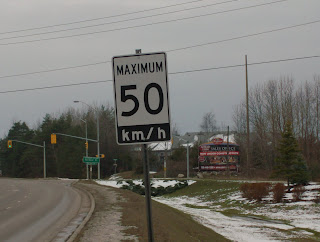When it comes to GST and the purchase and sale of real estate, both Buyers and Sellers need to be aware that many variables exist as to whether GST applies. The standard Agreement of Purchase and Sale document used in Ontario states as follows:
If this transaction is subject to Goods and Services Tax (G.S.T.), then such tax shall be
included in or in addition to (select one choice) the Purchase Price. If this transaction is not subject to G.S.T., Seller agrees to certify on or before closing, that the transaction is not subject to G.S.T.Genreally speaking, resale real estate
is not subject to GST. In this instance even with GST not being applicable, the above clause would read that "such tax shall be included in the Purchase Price." This stems from the premise that GST was paid at the time the property originally sold such as on a new home or on a newly created lot.
GST
is payable both on new homes and on newly created vacant lots and typically the Builder/Developer has the GST factored into the asking price. Often in the case of a new home, if the Buyer is purchasing the property as their primary residence, then a GST rebate applies wherein the home Buyer is eligible for a partial rebate of the GST paid. In this instance, the Builder typically has the Buyer of the home assign the GST rebate back to them. Again this rebate has usually been factored into the Builder's asking price and profit margin on the home thus keeping the whole matter of price and GST simpler for the Buyer to understand and deal with.
Within our market area, we have numerous properties where GST becomes somewhat of a "grey" area. For example, in many instances, Buyers purchase a condominium or other property that is used on a part-time basis by the owner and the balance of the time it is rented out through a rental program ie: in the Intrawest Village and at Blue Mountain. Matters are complicated further when the Buyer for whatever reason, titles the property in a "company name." In any of these instances, even though the property is considered resale real estate, GST
may very likely apply. Both the fact that (a) the property is in a "company" versus "personal" name and (b) that income (rental revenue) was realized from the property would in all likelihood trigger GST being applicable on its sale. It then becomes a matter of is the applicable GST going to be "included in" the Purchase Price meaning it is paid by the Seller, or is the GST "in addition to" the Purchase Price thus being paid by the Buyer.
When the matter of GST is questionable with respect to a property you are considering buying, the best professinal advice as REALTORS® we can give you, is that you seek qualified advice from either your lawyer or accountant. To this end, any Agreement of Purchase and Sale you enter into, should contain a "condition" whereby the offer is conditional on you obtaining such advice and satisfying yourself as to whether GST not only applies, but more importantly who is going to be responsible for paying it. With many recreational properties and vacant lots in the area now selling for prices well into the six figure range, GST on these properties can total into the thousands. Costly surprises can be avoided by having your REALTOR® insert a condition into your offer allowing you the opportunity to obtain the expert accounting and or legal advice you need to clarify the matter.







